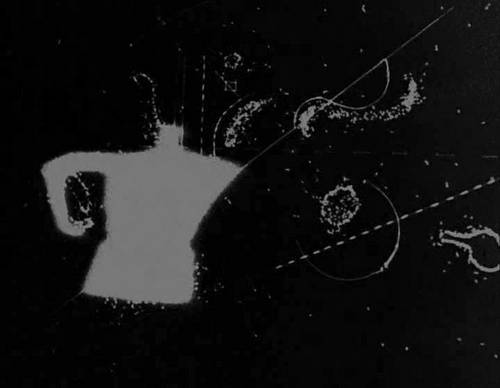William Kentridge
07 Feb - 06 May 2007
WILLIAM KENTRIDGE
Journey to the Moon
7 Fragments for Georges Méliés / Day for Night
Works from the Marx Collection
7 February - 6 May 2007
Enchanted by the first ever science fiction film, George Méliès’ Le Voyage dans la Lune (1902), one hundred years later William Kentridge has created a work bearing the same name in homage to the French experimental filmmaker. Projected onto nine screens, drawings metamorphose into scenes of bustling life, the strokes propelled briskly across the paper, forming semantic clusters in a self-activating and surreal manner. In this way the everyday slides into the absurd, only to then re-emerge as something familiar. What seemed unfathomable only a moment ago condenses into an unambiguous form: a light-coloured figure has just wandered across the midnight-black paper, then it vanishes from view, engulfed by the blacking of real coffee powder. Always thinking in contrasts, this method has become emblematic of Kentridge’s work, for he is continually connecting his artistic approach to recollections of life under the apartheid system. And because he is no animation filmmaker in the conventional sense, his films seem like documents from a bygone era. In his films Kentridge is continually striving to create a unique art form that evokes the charm of the earliest days of cinema, a charm that the Laterna Magica exuded. And so, as in Méliès’ film, where the rocket soars to the moon and crashes into its eye, in Kentridge’s work the espresso maker takes off to the unfathomable depths, ready to search for the past in the present.
Curators: Melanie Franke and Joachim Jäger.
Journey to the Moon
7 Fragments for Georges Méliés / Day for Night
Works from the Marx Collection
7 February - 6 May 2007
Enchanted by the first ever science fiction film, George Méliès’ Le Voyage dans la Lune (1902), one hundred years later William Kentridge has created a work bearing the same name in homage to the French experimental filmmaker. Projected onto nine screens, drawings metamorphose into scenes of bustling life, the strokes propelled briskly across the paper, forming semantic clusters in a self-activating and surreal manner. In this way the everyday slides into the absurd, only to then re-emerge as something familiar. What seemed unfathomable only a moment ago condenses into an unambiguous form: a light-coloured figure has just wandered across the midnight-black paper, then it vanishes from view, engulfed by the blacking of real coffee powder. Always thinking in contrasts, this method has become emblematic of Kentridge’s work, for he is continually connecting his artistic approach to recollections of life under the apartheid system. And because he is no animation filmmaker in the conventional sense, his films seem like documents from a bygone era. In his films Kentridge is continually striving to create a unique art form that evokes the charm of the earliest days of cinema, a charm that the Laterna Magica exuded. And so, as in Méliès’ film, where the rocket soars to the moon and crashes into its eye, in Kentridge’s work the espresso maker takes off to the unfathomable depths, ready to search for the past in the present.
Curators: Melanie Franke and Joachim Jäger.

